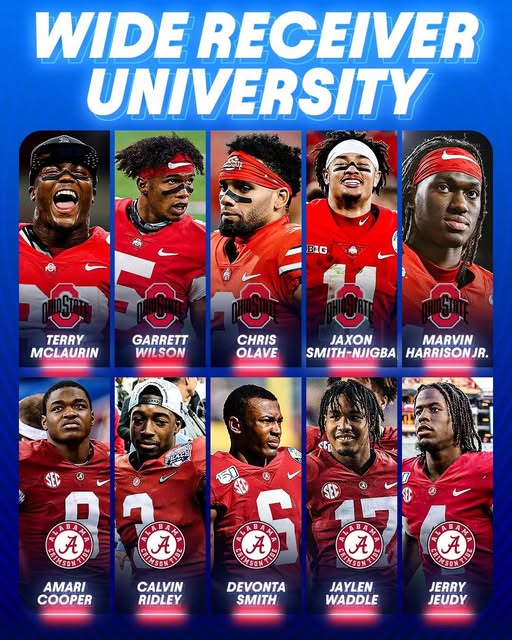When you hear the words “Heisman Trophy,” a handful of college football programs immediately come to mind. But none resonate louder than the University of Alabama. Long considered the gold standard of college football excellence, Alabama has forged a legacy of producing elite players and Heisman winners. As the sport continues to evolve with transfer portal chaos, NIL deals, and the dawn of a 12-team playoff era, the Crimson Tide’s Heisman legacy stands as a pillar of tradition and performance amidst the flux.
From the historic dominance under Paul “Bear” Bryant to the explosive modern offenses under Nick Saban, Alabama’s Heisman narrative has transitioned from overdue recognition to consistent expectation. With three Heisman winners in just over a decade and numerous finalists, Alabama has gone from being inexplicably shut out of college football’s most prestigious individual honor to being a perennial producer of contenders.
From Heisman Drought to Heisman Dynasty
For decades, Alabama’s resume was oddly missing the Heisman Trophy. Despite national titles, legendary coaches, and All-American talent, the Crimson Tide had no winners until 2009, when Mark Ingram II finally broke through. Ingram rushed for 1,658 yards and 17 touchdowns that season, leading Alabama to a national championship and ending the program’s Heisman drought. His win felt like a long-overdue validation of the Tide’s place in the sport’s upper echelon.
But what followed was more than validation—it was domination. In 2015, Derrick Henry took home the trophy with a staggering 2,219 rushing yards and 28 touchdowns, a campaign that featured unforgettable performances like his 271-yard outburst against Auburn. Then came DeVonta Smith in 2020, who shattered the mold by becoming the first wide receiver to win the Heisman since Desmond Howard in 1991. Smith was a model of consistency and explosiveness, finishing with 117 receptions, 1,856 yards, and 23 touchdowns in a pandemic-shortened season.
These wins weren’t just individual triumphs—they were a statement. Alabama, once overlooked in the Heisman conversation, had become synonymous with college football greatness at both the team and individual levels.
The Quarterback Era: Young Guns and Big Stats
If the early 2010s belonged to Alabama’s bruising backs and versatile receivers, the latter part of the decade ushered in a new focus: elite quarterback play. In the past, Alabama’s offensive scheme had been methodical, reliant on physical line play and a ground-heavy approach. But with the hiring of offensive minds like Lane Kiffin and Steve Sarkisian, the Tide transformed into an aerial powerhouse.
Tua Tagovailoa, though he didn’t win the Heisman, came painfully close in 2018 and revolutionized Alabama’s offensive identity. His successor, Mac Jones, was a finalist in 2020, and then came Bryce Young, the first Alabama quarterback to win the Heisman. In 2021, Young threw for 4,872 yards and 47 touchdowns, showcasing poise, vision, and a knack for making the impossible look routine.
Bryce’s victory was significant not just for the hardware, but for what it symbolized. Alabama had evolved from a program that relied on defensive strength and rushing attacks to one that produced quarterbacks who could lead shootouts and dominate highlight reels. In an era where quarterbacks often define programs, Alabama had become a quarterback factory.
NIL, Transfer Portal, and the Heisman Hunt
With the introduction of Name, Image, and Likeness (NIL) compensation and the liberalization of the transfer portal, college football’s ecosystem has shifted dramatically. And yet, Alabama remains at the forefront.
The program’s stability and visibility make it an attractive destination for five-star recruits and potential Heisman candidates. Even in the age of player movement, few programs offer what Alabama does: a national spotlight, consistent championship contention, and an NFL launching pad.
This new era has created both opportunity and risk. Players now have more power than ever before to change their circumstances, which means Alabama must continually re-recruit its own talent while also leveraging the portal. In 2024, for example, Alabama added high-profile transfers on both sides of the ball, signaling that it’s adapting to the new normal.
But the Heisman isn’t just about numbers or media hype—it’s about narrative. And few programs can craft better narratives than Alabama. From Ingram’s underdog rise to Smith’s soft-spoken dominance, Alabama players have consistently embodied the ethos of “team first,” even while being celebrated individually.
Kalen DeBoer: The New Architect of Heisman Hopes?
As Alabama transitions from the Nick Saban era to the leadership of Kalen DeBoer, the question looms: Can the Heisman legacy continue?
DeBoer arrives in Tuscaloosa after an impressive stint at Washington, where he turned quarterback Michael Penix Jr. into a Heisman finalist and led the Huskies to the national championship game. DeBoer’s offenses are known for their creativity, tempo, and vertical passing attack—all ingredients that create fertile ground for Heisman-worthy campaigns.
Early signs suggest that DeBoer will continue Alabama’s tradition of developing star quarterbacks. Whether it’s Jalen Milroe, Ty Simpson, or one of the program’s young guns, DeBoer’s system will likely keep Alabama in the Heisman conversation. The infrastructure is already in place—elite skill talent, top-tier protection, and a national platform. What remains is for a player to emerge and seize the moment.
Defensive Stars: The Overlooked Heisman Contenders
While offensive players have dominated the Heisman in recent years, Alabama has consistently produced defensive stars capable of altering games. Names like Rolando McClain, C.J. Mosley, Minkah Fitzpatrick, Quinnen Williams, and Will Anderson Jr. all played at a Heisman level, even if the voters didn’t recognize them.
Anderson, in particular, made a compelling case in 2021 and 2022. He recorded 17.5 sacks and 101 tackles in his sophomore year, drawing comparisons to greats like Von Miller and Derrick Thomas. Though he didn’t receive a Heisman invitation, his dominance highlighted the continued excellence of Alabama’s defensive tradition.
As college football places increasing emphasis on offense, defenders face an uphill battle for Heisman consideration. But if any school can reverse that trend, it’s Alabama. DeBoer’s staff includes defensive guru Kane Wommack, and the pipeline of NFL-caliber talent shows no sign of slowing down.
The Heisman Brand and Recruiting Impact
Perhaps the most underappreciated aspect of Alabama’s Heisman run is its effect on recruiting. When a program can point to a recent Heisman winner at running back, wide receiver, and quarterback, it sends a powerful message to top recruits: you can reach the sport’s pinnacle here.
It’s no surprise that Alabama consistently lands top-tier talent across multiple positions. Prospects want to be developed, win championships, and have a shot at personal glory. The Heisman legacy is a recruiting weapon that pairs perfectly with Alabama’s NFL pedigree and national reach.
In this sense, Alabama’s Heisman legacy is self-sustaining. Success begets success. Each winner inspires the next generation, creating a culture where excellence is the standard and individual greatness is celebrated within the team framework.
Looking Ahead: Who’s Next?
With a new coaching regime and a fresh offensive system, Alabama’s next Heisman contender may come from an unexpected place. Sophomore receivers like Jalen Hale or incoming freshmen such as Ryan Williams have the explosiveness to dazzle. Running backs like Justice Haynes are poised for breakout years. And the quarterback competition will likely produce a star who could capture national attention by midseason.
In the end, the Heisman Trophy is as much about storylines as it is about stats. Alabama offers both. The national spotlight, the championship pedigree, the tradition—these are the ingredients that make the Crimson Tide’s Heisman recipe so potent.



